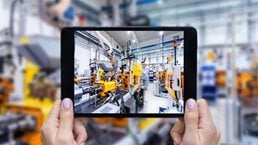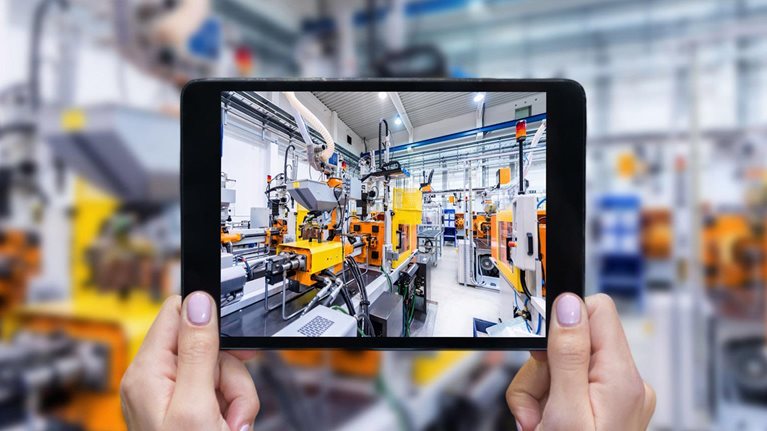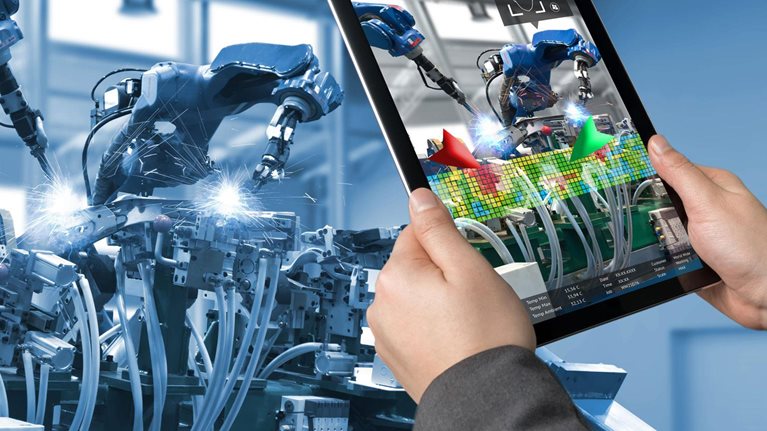The latest revolution may have started in the world of software and services, but now heavy industries1 are also embracing the power of the newest wave of digitization in manufacturing. Leading companies in sectors including mining, chemicals, steelmaking and pulp and paper are applying new data sources and new digital technologies to boost the throughput, efficiency, reliability, and productivity of their manufacturing operations.
Stay current on your favorite topics
These companies are embarking on their digital journeys from very different starting points. In recent years, we’ve visited hundreds of plants and spent time talking with managers and operations personnel about their current technologies and their digital ambitions. From that work, we have defined four broad levels of digital maturity: three that exist today, and Digital 4.0, a hypothetical future state based on technologies and approaches that are still under development (see sidebar, “Four stages of digital maturity in heavy industry”).
Today, average digital maturity levels vary by sub-sector, although there are also considerable differences at the company and plant level (Exhibit 1). For sites and sectors operating at lower levels of maturity, that means there are opportunities to improve EBITDA by 3 to 5 percentage points or more. For more mature sites the potential might be lower, although a one- to three-percentage-point increase in EBITDA is still a substantial improvement. The chemical industry can be used as a good reference point, where the average impact of recent large-scale digitization programs has been in the order of 3 to 5 EBITDA percentage points, although some companies have achieved remarkable performance improvements, such as throughput increases of over 30 percent.

The digital landscape
Today’s Industry 4.0 manufacturing opportunities for heavy industrial players are concentrated in four main areas (Exhibit 2). These levers represent the current sweet spot for digital investments, since they rely on relatively mature technologies and can deliver proven value.

To help companies decide where to focus their efforts, we have developed a heat map of digital opportunities by sector (Exhibit 3). In the first three of the four main areas, our experience suggests companies can expect their investments to pay back in three years or less.

Data analytics
The largest sources of value for all sectors except mining extraction come from the application of data analytics to improve throughput, yield, energy efficiency, and quality. Most heavy industrial players companies have rich historical data resources collected from their manufacturing operations. Advanced analytical techniques can help them learn from this data: combing through it to extract valuable insights into the underlying drivers of manufacturing performance, balancing the complex trade-offs between variables, and enabling higher levels of real-time control performance. In today’s high-demand market, throughput is clearly the winning value proposition, as extra output not only adds to the full profit margin, but also dilutes the full cost base. Downturn markets will benefit more from a focus on costs, such as energy, yield and quality.
Would you like to learn more about our Operations Practice?
The use of data analytics to increase asset reliability is often heralded as a major digital opportunity, but so far, the approach has fallen short of expectations—except where large fleets of similar assets are present, like rolling stock in mining. Most industrial operations tend to lack the quantities of data needed to apply these predictive-maintenance techniques: big assets do not yield enough failures and small assets are more cost-effectively served by a redundancy strategy. Our experience suggests that, while digitization can deliver significant value in maintenance and reliability activities, doing so requires companies to adopt other levers in addition to analytics. This is especially true for the digitization of the workforce, as this creates new sources of data: each human coordinates a multi-sensor flow into the data environment, opening a new world for maintenance strategy, management, and execution.
The digital workforce
Supporting an organization’s human workforce with new digital tools can deliver tremendous value in the long term. Digital approaches in this area can include tools to accelerate and simplify planning, scheduling, and permitting activities, boosting workforce productivity while providing significant health and safety benefits. Workers can also benefit from real-time access to documentation, decision-support, and troubleshooting tools. And the flow of information runs both ways: when staff record their activities and observations in digital form, that data can be stored and analyzed as an additional source of insights for future improvements—the base for the next wave of data analytics.
Asset network value maximization
Thinking about manufacturing assets as an integrated network, rather than a collection of individual machines, helps companies eliminate bottlenecks, improve responsiveness, and streamline their end-to-end value chains. Heavy industry players see a smaller improvement opportunity here than some other industries, since many already run highly integrated manufacturing operations. We believe most could still capture value from the use of digital tools to optimize schedules, cutting lead times, trimming in-process inventories and ensuring that capacity is put the most profitable use available.

How to achieve and sustain the impact of digital manufacturing at scale
Robotics and cobotics
Robotics is a major opportunity area in the medium term, thanks to the rapidly falling price and increasing capability of robot systems, but low-cost multifunctional mobile robots suitable for heavy industrial environments are not yet available. Whenever autonomous guided vehicles can be applied, however, a clear business case is likely to be found.
Creating a digital vision
Heavy industrial manufacturers won’t be able to grab the available digital value in one hit. The scale and complexity of their assets means they will need to apply new digital tools and approaches at multiple places across their operations. Like any large-scale transformation effort, success will require companies to develop a clear, compelling vision of the kind of digital organization they want to create.
It will also require them to be honest about their current strengths and weaknesses. Digitization is about much more than technology, it can only be achieved if a company’s people are willing to change their way of working, and if they have the right skills and expertise, along with a true “digital” mindset. In this regard, the digital transformation is very similar to the lean or manufacturing-excellence transformation that many companies have already undergone, with very similar success factors.
In future articles, we will look in more depth at the different ways heavy industrial companies can approach the challenge of digital transformation, and at the resources, infrastructure and enablers they need to make it work.


